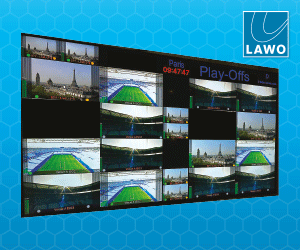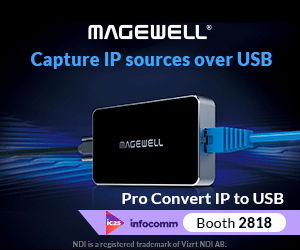In recent years we have seen huge advances in technology and the impact it has had on making interactive video simpler to use and easier to engage with than ever before. Despite this progress, there remains an inaccurate perception that interactive video content is not required, is far too expensive, and difficult to implement for B2B marketers.

In recent years we have seen huge advances in technology and the impact it has had on making interactive video simpler to use and easier to engage with than ever before. Despite this progress, there remains an inaccurate perception that interactive video content is not required, is far too expensive, and difficult to implement for B2B marketers.
The reality is that these are now unsubstantiated myths. As the digital marketplace continues to become more image-driven and increasingly mobile-enabled, brands today are forced to compete for attention using any available tools that can provide them with an edge and in todays world, that edge increasingly means video.
It has been proven to keep visitors on a brands web page for longer and means that video is undoubtedly more effective and memorable than traditional written content. This is because interactive video promotes far greater engagement than a passive video viewing experience and is why we believe interactive video is the now the must-have for high impact content marketing.
There are also a number of myths about why marketers may not opt for interactive video. I would like to address a few of these here.
Myth #1: Interactive video is far too expensive to produce
So lets consider the components behind an interactive video – a number of questions come to mind. How was the video made? Is the video overlaid with text elements and graphics that can be clicked on and changed by the viewer? Is it interactive from the start?
Depending on the individual and their own preconceptions, the actual perceptions behind how expensive interactive videos are to create will vary dramatically. An interactive video study by Brightcove and DemandMetric found that the leading reason cited for not using interactive video was budget constraints. But the survey also found that among current users of interactive video the cost issue ranked only 10th on the list of deterrents against implementing interactive video.
In reality, this means that the ability to implement interactive video in an effective manner depends on the toolset chosen. It is much easier now to avoid the risk of a custom development project going over budget due to the transparency of costs of the tools and platforms for creating interactive video.
Myth #2: Interactive video is unnecessary for b2b brands
Traditional B2B models and thinking means that individuals in the sector may still believe that interactive video is restricted only to the consumer-facing marketing, but this is patently not true.
B2B marketers are in fact increasingly adopting interactive video at a rapid pace and see the benefits it is bringing to their business. The DemandMetric and Brightcove research targeted specifically B2B or mixed B2B/B2C organizations, and 20 per cent of respondents were already making use of interactive video.
Interactive video has numerous uses. In the research conducted, half of the survey respondents used interactive video for four or more of the uses listed below:
Myth #3: Interactive video is unnecessary
The Brightcove and DemandMetric study also looked at the value of interactive video for both engagement and conversion. While only 15% of respondents were unsure how well interactive video engages, more than one-third didnt know how well interactive video converts and an additional 30% were neutral. The study also discovered that marketers who use interactive video extensively were more likely to rank better conversion and more sales as benefits in comparison to those who were less regular users of interactive video.
Once conversion measurements and campaign KPIs are clearly defined and put in place, marketers may discover that interactive video is a more efficient conversion mechanism than they previously believed.
However, ultimately it is simple. All brands want to make a long lasting impression and amplify awareness but the challenge is to accomplish this while providing consumers with an experience that is worth sharing.
This is where interactive video comes into play and it is clear that even just a small amount of research on interactive video toolsets could lead to substantial returns on video engagement, while boosting conversion rates and sales.
Sophie Rayers is Director of Marketing for EMEA & LATAM at Brightcove.
















































































